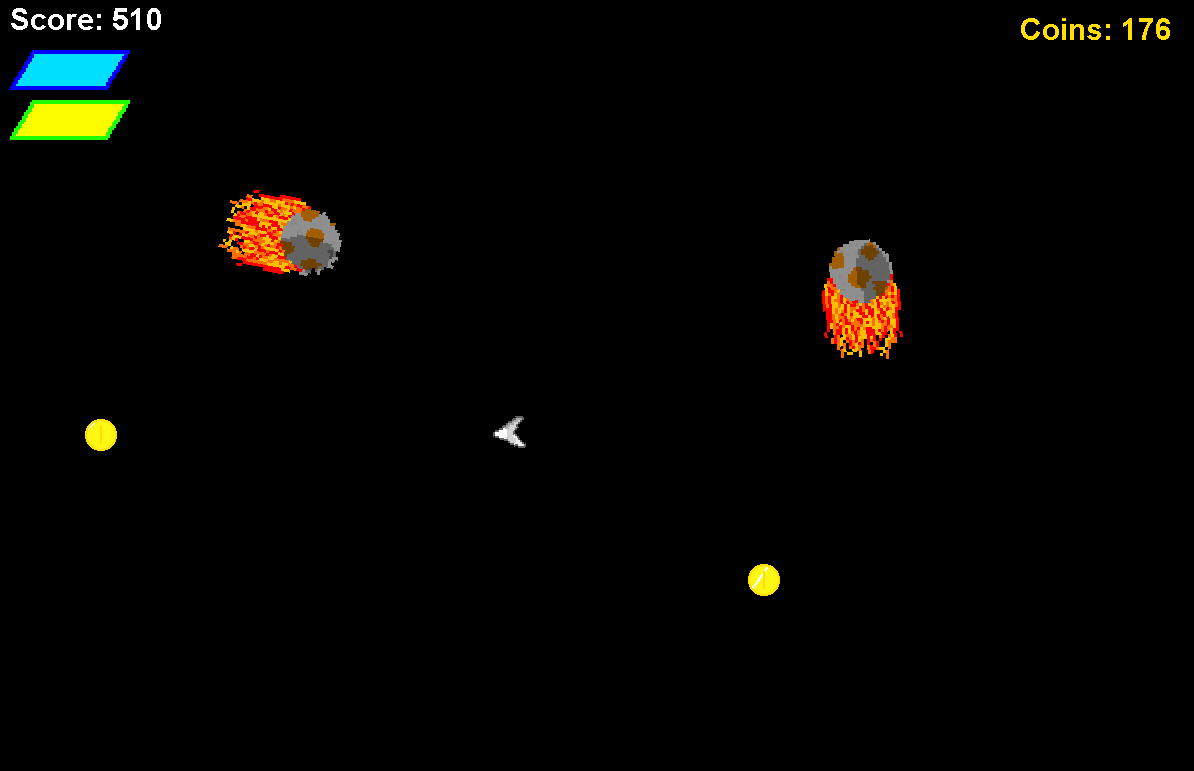DodgeThe F-ing Meteors And That's It Mac OS
- Dodge The F-ing Meteors And That's It Mac Os Download
- Dodge The F-ing Meteors And That's It Mac Os Catalina
- Dodge The F-ing Meteors And That's It Mac Os Iso
- Dodge The F-ing Meteors And That's It Mac Os X
Meteor, Mid-Range, All Players The Meteor™ fits nicely into our midrange lineup next to the Comet™, and delivers steady, controlled turnovers with a lot of glide. Even at slower speeds. Or release it at a seven o'clock angle for a nice smooth hyzer. Download MeteorDodge! App 1.0 for iPhone & iPad free online at AppPure. Get MeteorDodge! For iOS latest version. Aliens are attacking. Instructor Before we get going for the installationof Meteor on a Mac or a Linux,let me cover the installation for Windows.The first thing you need to do is to goto the page hereand then click on Install Now.This is the installation for OSX in Linux,but we'll cover Windows first.Let me switch to a Windows machine,because I'm on a Mac right. Dodge The f-ing meteors and that's it #2! A downloadable game for Windows, macOS, and Linux. Hello fellow Humans! I am CactusCoder131, the developer of this failure, and actually, this is a sequel to the please-don't-play-my-30-minutes-game game! What I forgot: press escape to pause the game, if you need a.

Most of the new features in Meteor 1.7 are either applied directly behind the scenes (in a backwards compatible manner) or are opt-in. For a complete breakdown of the changes, please refer to the changelog.
The above being said, there are a few items that require additional attention, which are outlined below.
Babel / `meteor-node-stubs` updates
After updating to Meteor 1.7 or 1.7.0.1, you should update the @babel/runtime npm package (as well as other Babel-related packages), and the meteor-node-stubs package, to their latest versions.
Mongo 3.6
Mongo has been upgraded to version 3.6.4 for 64-bit systems, and 3.2.19 for 32-bit systems.
After upgrading an application to use Mongo 3.6.4, it has been observed that attempting to run that application with an older version of Meteor (via meteor --release X), that uses an older version of Mongo, can prevent the application from starting. This can be fixed by either running meteor reset (WARNING: will wipe your local DB), or by repairing the Mongo database. To repair the database, find the mongod binary on your system that lines up with the Meteor release you are jumping back to, and run mongodb --dbpath your-apps-db --repair. For example:
Migrating from a version older than 1.6?
If you’re migrating from a version of Meteor older than Meteor 1.6, there may be important considerations not listed in this guide (which specifically covers 1.6 to 1.7). Please review the older migration guides for details:
- Migrating to Meteor 1.6 (from 1.5)
- Migrating to Meteor 1.5 (from 1.4)
- Migrating to Meteor 1.4 (from 1.3)
- Migrating to Meteor 1.3 (from 1.2)
Remarks
Meteor is a full-stack JavaScript platform for developing modern Web and mobile applications.
Within one project, you are able to build your client (browser and/or hybrid mobile App for Android and/or iOS) and server sides.
Reference pages:
Versions
| Version | Release Date |
|---|---|
| 0.4.0 | 2012-08-30 |
| 0.5.0 | 2013-10-17 |
| 0.6.0 | 2013-04-04 |
| 0.7.0 | 2013-12-20 |
| 0.8.0 | 2014-04-21 |
| 0.9.0 | 2014-08-26 |
| 0.9.1 | 2014-09-04 |
| 0.9.2 | 2014-09-15 |
| 0.9.3 | 2014-09-25 |
| 0.9.4 | 2014-10-13 |
| 1.0.1 | 2014-12-09 |
| 1.0.2 | 2014-12-19 |
| 1.0.3.1 | 2014-12-09 |
| 1.1.0 | 2015-03-31 |
| 1.2.0 | 2015-09-21 |
| 1.3.0 | 2016-03-27 |
| 1.4.0 | 2016-07-25 |
| 1.5.0 | 2017-05-30 |
Build Mobile Apps
Meteor uses Cordova to package your application into a hybrid Mobile App. Once packaged, the App can be distributed like native Apps (through Apple App Store, Google Play Store, etc.)
- Add the target platform(s) to your Meteor project:
- Install the Android SDK and/or Xcode (for iOS, requires Mac OS).
- Run your project (start with development mode):
For iOS (only available with Mac OS):
- Build your App package for distribution:
This will create android and/or ios folder(s) alongside your server bundle.
- The
androidfolder contains therelease-unsigned.apkfile that you need to sign and zip align. - The
iosfolder contains the Xcode project that you need to sign.
See also the Meteor Mobile Apps topic.
Reference page: Meteor Guide > Build > Mobile
Checking the Version of the Meteor Tool & Meteor Projects
Meteor Tool
To check the installed version of the Meteor tool, just run the following command outside of any Meteor projects:
To get a list of all official (recommended) Meteor releases, run:
Meteor Projects
If you want to check the project version of Meteor, you can also execute the following command inside a project:
or just print content of the file .meteor/release :
In case you want to check the version of the packages which are currently installed in your Meteor project, print the content of the file .meteor/versions :
Meteor Website
To see which version of Meteor a Meteor based website is running, dump the contents of Meteor.release in your browsers console while visiting the website:
Getting Started
Install Meteor
On OS X and Linux
Install the latest official Meteor release from your terminal:
On Windows
Download the official Meteor installer here.
Create your app
Once you've installed Meteor, create a project:
Run it
Run it locally:
Note: Meteor server running on: http://localhost:3000/
Then head to http://localhost:3000 to see your new Meteor application.
- Read more about getting started with Meteor at the [Meteor Guide].
- Explore Meteor Packages at atmosphere - a modern, fast, well engineered package manager.
Managing Packages
Meteor has it's own package repository on atmospherejs.com
You can add new packages from atmosphere by running:
For example:
Similarly, you can remove the same package by:
To see current packages in your project, type:
List of packages can also be found in the file ./meteor/packages . To add a package add the package name in this file and to remove delete it.
To add a package locally, (e.g. unpublished packages or edited version of published packages), save the package in packages folder in the root.
Starting with version 1.3, Meteor added support for npm packages.
You can use the npm command inside Meteor project's directory as you would normally do without Meteor, or with the meteor npm command, which will use the bundled version of npm.
Sample apps
Meteor has several sample apps built-in. You can create a project with one of them and learn from how it was built. To create a sample app, install Meteor (see Getting Started) and then type:
Dodge The F-ing Meteors And That's It Mac Os Download
For example to create a sample todos app, write:
To get a list of all sample apps, type:
Understanding build progress
Dodge The F-ing Meteors And That's It Mac Os Catalina
Sometimes builds take longer than expected. There are a few environment variables you can set to better understand what's happening during the build process.
Where <n> is a number of ms. Any process taking longer than this will be logged.
Linux/OSX Example
Windows Example
Updating Meteor Projects & Installed Packages

The Meteor Tool will notify you when a newer release is available.
To update Meteor projects to the latest release, execute the following command inside a Meteor project:
In case you want to update your Meteor project to a specific Meteor release, run the following command inside the project:
Dodge The F-ing Meteors And That's It Mac Os Iso
If you want to update all non-core packages, run:
Dodge The F-ing Meteors And That's It Mac Os X
You can also update specific packages by passing their names as a command line argument to meteor update , for example: